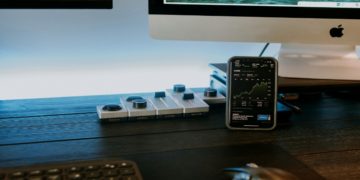Introduction
In the dynamic world of financial markets, traders are constantly seeking that elusive edge—something that sets them apart from the competition and leads to consistent profitability. Two popular methodologies often debated among traders are order flow analysis and technical analysis. Each offers unique insights into market behavior, but which one truly provides an edge? This comprehensive guide delves into both approaches, exploring their intricacies, advantages, and how they can be integrated for a more robust trading strategy.
Understanding Order Flow
Order flow analysis involves examining the actual buy and sell orders in the market to gain insight into future price movements. This approach focuses on the supply-demand dynamics reflected in the order book, enabling traders to understand where significant buying or selling pressure might occur.
The Mechanics of Order Flow
Order flow is rooted in the microstructure of financial markets:
– Order Book Dynamics: An order book consists of buy and sell orders at various price levels. Understanding this structure allows traders to identify areas of support and resistance.
– Level II Data: Provides detailed information about price levels, including the size of orders. This can reveal hidden liquidity pools that affect price movement.
– Time and Sales Data: Shows real-time transactions, helping traders gauge market sentiment.
Benefits of Order Flow Analysis
– Real-Time Insights: Provides immediate feedback on market conditions.
– Market Sentiment: Offers a clear view of trader sentiment through actual trade volumes.
– Precision: Enables precise entry and exit points based on real buying and selling activity.
Exploring Technical Analysis
Technical analysis, on the other hand, involves studying historical price patterns and statistical indicators to forecast future price movements. This methodology is widely used due to its accessibility and effectiveness across different markets.
Core Principles of Technical Analysis
Technical analysis relies on several key principles:
– Price Discounts Everything: All information is reflected in current prices.
– Price Moves in Trends: Identifies trends to make informed decisions.
– History Repeats Itself: Patterns observed historically tend to recur.
Common Tools Used
– Chart Patterns: Head and shoulders, triangles, double tops/bottoms.
– Technical Indicators: Moving averages, RSI (Relative Strength Index), MACD (Moving Average Convergence Divergence).
– Volume Analysis: Confirms trend strength or potential reversals.
Key Differences Between Order Flow and Technical Analysis
While both methods aim to predict market movements, they differ fundamentally:
– Data Source:
– Order flow relies on real-time data from exchanges.
– Technical analysis uses historical price data.
– Focus:
– Order flow emphasizes current market dynamics.
– Technical analysis focuses on historical patterns.
These differences often lead traders to prefer one over the other based on their trading style and objectives.
Advantages of Order Flow
Order flow analysis offers several advantages that can provide a competitive edge:
– Transparency: Offers a transparent view of market activity at any given moment.
– Early Signal Detection: Identifies emerging trends before they become apparent in price charts.
– Liquidity Insights: Reveals where large players are positioned, which can indicate potential breakout or reversal zones.
Advantages of Technical Analysis
Despite its reliance on historical data, technical analysis remains popular due to its proven efficacy:
– Versatility: Applicable across various asset classes including stocks, forex, commodities, and cryptocurrencies.
– Accessibility: Widely available tools make it easier for new traders to adopt.
– Risk Management: Helps in setting stop-loss levels and profit targets effectively.
Real-World Examples and Case Studies
Understanding theoretical concepts is one thing; seeing them applied in real-world scenarios is another. Here we explore how both methods have been used successfully by professional traders:
Case Study 1: Using Order Flow for Scalping
A day trader observes increased buying pressure at a key support level using Bookmap—a platform specialized for order flow visualization. By entering a long position as buy orders surge, they capture a quick profit before resistance levels are tested.
Case Study 2: Swing Trading with Technical Analysis
A swing trader identifies a head-and-shoulders pattern forming on a stock chart. Using technical indicators like RSI to confirm overbought conditions, they short the stock right before a significant downtrend ensues.
Integrating Order Flow with Technical Analysis
For traders looking to combine the strengths of both methodologies, integration can offer a more holistic view:
1. Confirming Signals: Use order flow to confirm technical signals such as breakouts or reversals.
2. Enhancing Entry/Exit Points: Align technical indicators with real-time order flow data for more precise trade execution.
3. Improving Risk Management: Utilize support/resistance levels from both analyses for setting stop-loss orders.
Tools and Platforms for Order Flow Analysis
To effectively implement order flow strategies, traders require specific tools:
– Bookmap: A platform offering detailed visualizations of market depth and dynamics.
– Sierra Chart: Provides advanced order book analytics along with charting capabilities.
These platforms enable traders to interpret complex data efficiently, enhancing decision-making processes.
Practical Tips for Traders
To maximize the benefits of either methodology—or both—consider these practical tips:
1. Stay Educated: Continuously update your knowledge about market microstructure and technical patterns.
2. Backtest Strategies: Test your strategies using historical data or simulated trading environments before going live.
3. Maintain Discipline: Stick to your trading plan and avoid emotional decision-making driven by short-term market fluctuations.
4. Leverage Technology: Utilize automated alerts for both order flow changes and technical indicator signals.
Ultimately, whether you choose order flow analysis, technical analysis, or a blend of both depends on your personal trading style and objectives. By understanding each method’s strengths and limitations, you can craft a strategy that gives you an edge in today’s competitive markets.














































































